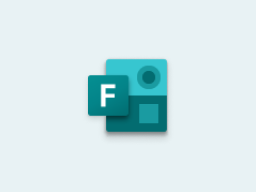Academic Assessment
Assessment is the ongoing process of
- Establishing clear, measurable objectives of student learning.
- Ensuring that students have sufficient opportunities to achieve outcomes.
- Systematically gathering, analyzing, and interpreting evidence to determine how well student learning matches our expectations.
- Using the resulting information to understand and improve student learning.
(Linda Suskie, 2004)
Program Review Guidelines
As a way to simplify and give guidance to the Six-Year Program Review Process, here are the major elements that should go into the five-year review, where they are found, and what types of analysis to include. Additionally, there are suggestions on how to incorporate other assessment data into the review.
Introduction
- Name of program
- Level of degree awarded—in most cases, this will be a BA/BS
- All delivery methods [on-ground, online, hybrid, ]
- Names and titles of faculty on the review team, as well as the name and title of the external reviewer.
Vision and purpose of the program
- How does the program support the school or division it is part of?
- How does the program align with the University’s mission?
Faculty
- Summary of current full-time faculty, their credentials, professional experience, and teaching/research interests.
- How many part-time faculty are utilized? What is the ratio of full-time faculty to part-time faculty?
- Summarize relevant faculty development activities since the last 5-year program
- What are the qualifications needed for part-time faculty?
Curriculum
- Provide a short overview of the program In the appendix, include a curriculum map and degree requirement sheet.
- If the program has concentrations, include a short overview of the concentration’s
- Describe and analyze what changes have been made to the curriculum in the last five years. What were the reasons for the changes? What were the results?
- Does the program offer classes in the University’s general education core? If so, what are they and how do they function within the core?
Student Learning Objectives
- What are the student learning objectives for the program?
- How do course-level objectives feed into the program learning objectives?
- How is student learning assessed? What are examples of direct and indirect measurements that are being used?
- During the analysis of the assessment, what have been the findings?
- What is the program doing well?
- What does the program need to improve upon?
Budget and Resources
- What is the program’s budget? Where do most of the allocation go [including faculty salary]?
- What are the current human and physical resources that carry out the program’s mission?
- Provide an analysis of current staffing and funding. How will the program carry out its mission?
- What are specific budget requests that will help support the vision of the program?
Achievements
- List faculty achievements that are relevant to the program
- List student achievements that are relevant to the program
- What are the three things the program is most proud of?
Appraisal & Data
- Demographic breakdown and achievement
- What factors might influence enrollment, retention, or graduation rates?
- Student headcount and FTE enrollment.
- Student credit-hours.
- Four and six-year graduation rates.
- Yearly retention rates.
Program Demand and Environmental Analysis
- What are the external developments that impact the program? Is there market research available that supports the growth or lack thereof in the future?
- Are there external exams, alumni surveys, or employer surveys that show the success of graduates?
- What are the most important trends in the field? How do they relate to the existing curriculum?
- What are areas of internal collaboration that could support the program?
Planning
Based on the review and the data analysis:
- What are two to three areas of measurable improvement? These can either be previous goals that have not been met or plans for the future of the program.
- Briefly summarize the program’s next five
- What are its goals?
- How will it measure these goals?
- What does a successful program look like?
- How do these goals support the larger curricular and program needs of the University?
External Reviewers Assessment
- External reviewers act as an integral part of the program review process. They can give unbiased feedback, make important suggestions, and frame debates in a productive It will be up to chairs or program heads to determine who is qualified to make the review. Non-competitive peer institutions are generally a good starting point, although, in certain fields, they may be difficult to find.
- External reviewers generally address:
- The range and depth of curricular offerings
- The adequacies for teaching, artistic creation, and
- Departmental service in the University as a whole [i.e. general education].
- Effectiveness of assessment and planning
- Suggestions for the short and long-term improvement of the
Appendices
There are frequently a wide range of appendices in the program To avoid overkill, think about including material that is unlikely to be easily accessed by institutional research. For example, you won’t need to include departmental retention numbers, but you should include faculty achievements and market analysis. If material is missing that IR or the CIE need, we will let you know. That said, here are examples of what data are included in the appendix:
- External environmental scan
- Faculty CV's and professional development.
- Curriculum map and degree requirement
- Examples of student learning
- If applicable, examples of student



